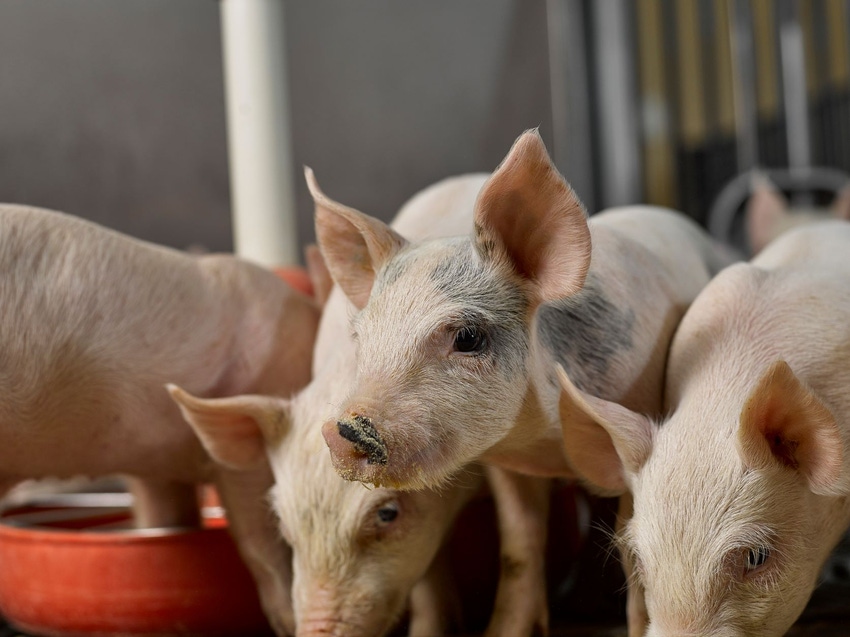Researchers create music as environmental enrichment for pigs
While similar studies have been done using classical music, Zapata notes that not all compositions generate positive emotions in the animals.
June 23, 2022

It is no secret that music can have an impact on a human's emotional state, but can the same thing be said for animals? What if music could help improve the welfare of livestock such as pigs?
When an assistant professor at the University of Calgary's Faculty of Veterinary Medicine was contacted to collaborate on a unique research project being carried out by the University of Antioquia in Colombia that focuses on improving the welfare of pigs with music, she did not hesitate to accept.
"My research aims to improve animal welfare," says Maria Camila Ceballos, PhD. "We use animals for food, work and many other things. Because they give us so much, I think we must give them a better quality of life. The life that animals live should be worth living."
With that goal in mind, Ceballos and three colleagues from the University of Antioquia and National University of Colombia — Berardo de Jesús Rodríguez, PhD; PhD candidate Juliana Zapata; and Ariel Tarazona, PhD — are hoping music might be a key to helping improve the lives of pigs throughout the industry.
"In the pig industry, the production system is too intensive, and that kind of system is stressful for the animals," says Ceballos, who has been working to improve animal welfare since the beginning of her career, studying and working in Colombia, Brazil, the United States and Canada. "When we came with the idea to create music for pigs, it was aiming to use it as environmental enrichment. Environmental enrichments are used to improve the quality of life of animals that are in captivity."
The idea of using music was chosen as it provides sensory stimulation and is a more accessible option than other kinds of environmental enrichments, such as physical (e.g., toys, hay for bedding or nesting, etc.). Not all production facilities have the capacity to provide these types of enrichments.
"What we have is an enrichment program for the animals that allows us to intervene in a less invasive way," says Zapata. "So, we thought it was necessary to create a stimulus or a sensory environmental enrichment that all pigs can enjoy simultaneously, without competing with their peers.
"Music has advantages such as it is not expensive and non-invasive, and that facilitates its implementation in production systems. Therefore, we started to work on creating music for this species, keeping in mind their auditive range and focusing on acoustic elements that generate positive responses."
While similar studies have been done using classical music, Zapata notes that not all compositions generate positive emotions in the animals which, in the end, is the desired objective. So, the researchers decided to create their own music for the cause.
Rodríguez has, to date, composed more than 47 different pieces of species-specific music consisting of certain acoustic elements of the music, such as harmony, amplitude, dissonance and instrumentation. This might not be the type of music you'd hear a symphony orchestra play, but the team was able to identify key factors of the music that generated positive emotions in pigs and the kind of acoustic elements needed to generate these emotions.
"Soon, we were able to identify which pieces of music were favorable for the pigs. We did an analysis to figure out what kind of music generated a positive response," says Zapata. "Through this analysis, we were able to conclude some parameters, like a recipe, for creating music for the pigs."
The group has published their first round of findings already, and are preparing to publish their newest discoveries, such as the identification of acoustic parameters to create species-specific music, and how that music influences agonistic behaviours and physiological stress responses.
Ceballos says, while these findings are promising, they are not a Band-Aid solution for the industry. "Probably, the pig industry will be able to use this tool to improve the welfare of pigs," she says. "However, we cannot assume that only by using music we will be able to provide good welfare. Animal welfare is multifactorial, and it depends on many elements such as facilities, nutrition, management, health and whether the environment allows pigs to perform natural behaviours such as rooting and foraging."
Source: University of Calgary, which is solely responsible for the information provided, and wholly owns the information. Informa Business Media and all its subsidiaries are not responsible for any of the content contained in this information asset.
You May Also Like


